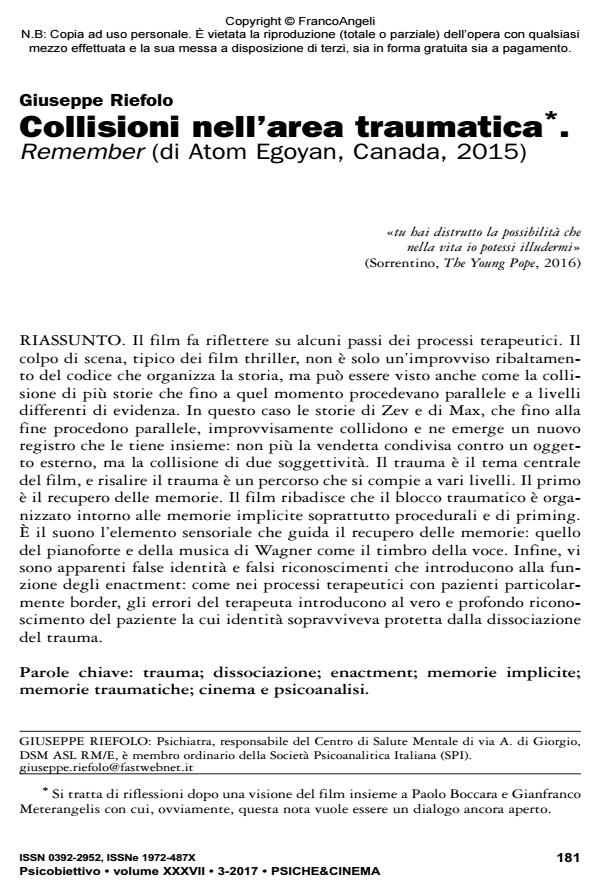Collisions In The Traumatic Sphere. Remember (Atom Egoyan, Canada, 2015)
Journal title PSICOBIETTIVO
Author/s Giuseppe Riefolo
Publishing Year 2017 Issue 2017/3
Language Italian Pages 16 P. 181-196 File size 129 KB
DOI 10.3280/PSOB2017-003011
DOI is like a bar code for intellectual property: to have more infomation
click here
Below, you can see the article first page
If you want to buy this article in PDF format, you can do it, following the instructions to buy download credits

FrancoAngeli is member of Publishers International Linking Association, Inc (PILA), a not-for-profit association which run the CrossRef service enabling links to and from online scholarly content.
The movie calls to ponder on some of the steps of the therapeutic processes. The coup de theater, typical of thriller movies, represents not only a sudden reversal of the code that organizes the story, but can also be interpreted as the collision of several stories that went parallel and at different levels of evidence until that moment. In this case, we are presented with Zev’s and Max’s stories, which till the end go in parallel. However, they suddenly collide, and a new element emerges that keeps them together: the collision of two individualities and no longer revenge shared against an external object. The central theme of the movie is trauma, and to get to its roots, it is necessary to make a journey characterized by several levels. The first one is represented by the recovery of the memories. The film reiterates that the traumatic block is organized around the implicit, mainly procedural and priming memories. Sound is the sensory element that drives memory retrieval: that of Wagner’s piano and music as well as the voice tone. Finally, there are illusive false identities and false recognitions that introduce the function of enactment: as in therapeutic processes with particularly borderline patients, the therapist's mistakes introduce the true and deep recognition by the patient whose identity until then survived protected by the trauma dissociation.
Keywords: Trauma; Dissociation; Enactments; Implicit Memories; Traumatic Memories; Cinema and Psychoanalysis.
Giuseppe Riefolo, Collisioni nell’area traumatica. Remember (di Atom Egoyan, Canada, 2015) in "PSICOBIETTIVO" 3/2017, pp 181-196, DOI: 10.3280/PSOB2017-003011